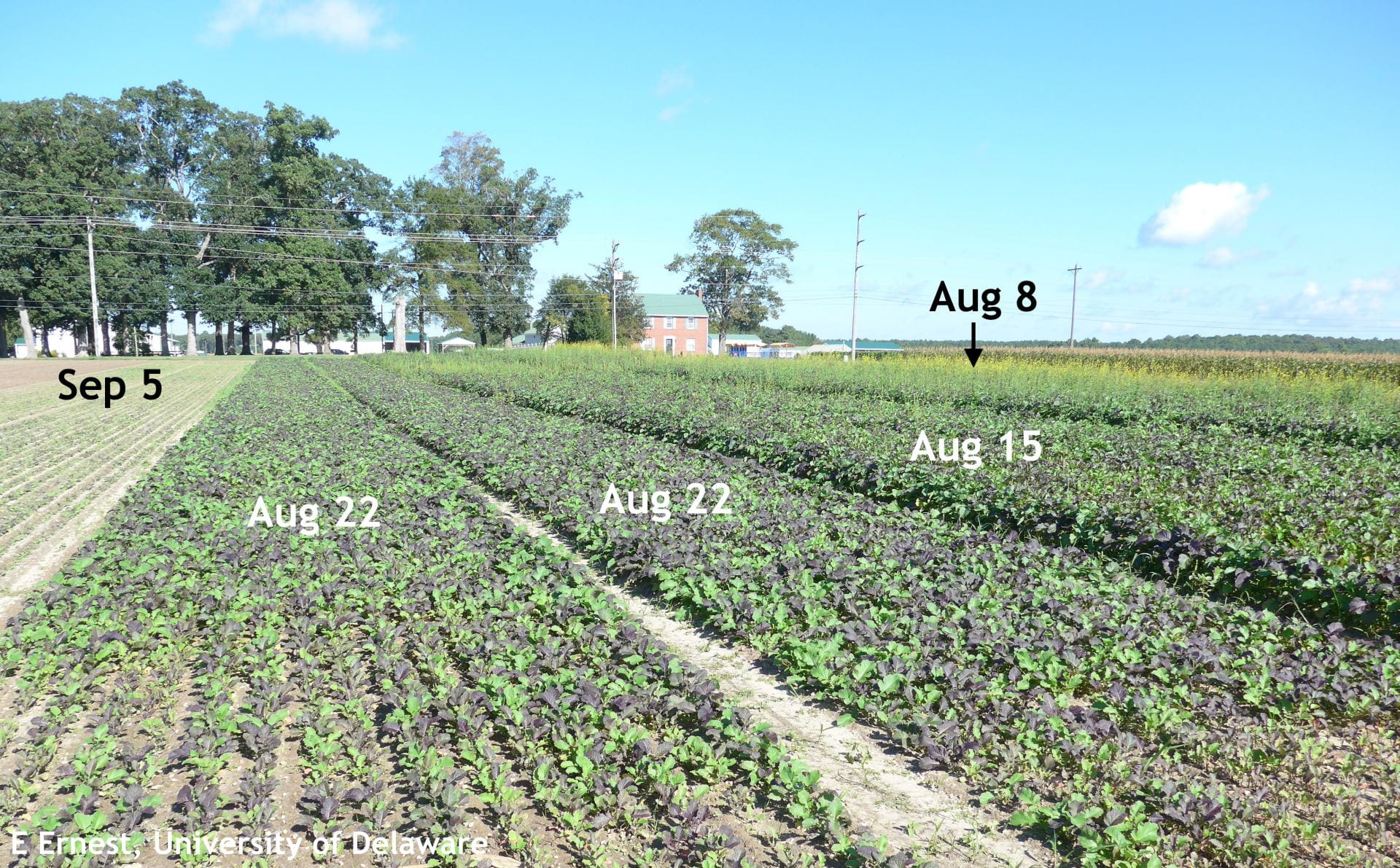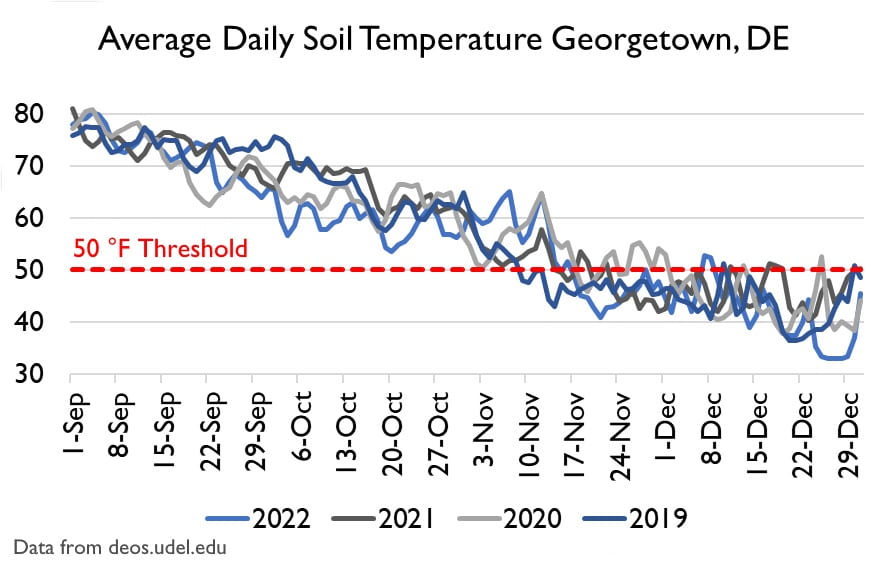Emmalea Ernest, Extension Fruit & Vegetable Specialist; emmalea@udel.edu
Biofumigation is a technique for managing soil-borne pathogens. The biofumigation process involves growing specific cover crops (mustard or sorghum species), then mowing the cover crop and incorporating the green cover crop material into the soil. The chopped cover crop material releases compounds into the soil that kill certain plant pathogens and nematodes. In this region, growers have been interested in using biofumigant mustards for managing Fusarium, Phytophthora capsici and root-knot nematodes. The standard recommendation for Delmarva has been to plant biofumigant mustards in the spring, but the timeline for spring biofumigation does not allow for early spring planting. In 2022, I measured biomass production in mustard planted in late summer and early fall to determine recommended planting dates for fall mustard biofumigation. ‘Caliente Rojo’ mustard that was planted on August 5, 15 and 22 produced sufficient biomass to complete the biofumigation process in September or October. A planting made on September 5 did not produce adequate biomass in time for effective biofumigation (Figure 1).
| Planting Date | Biofumigation Timing |
| 8-Aug | late September |
| 15-Aug | mid-October |
| 22-Aug | late October |
| 5-Sep | early December (too late) |

Figure 1. Fall 2022 biofumigant mustard planting on September 26. August 8 planting is at early flowering and ready to mow and incorporate. The September 5 planting on the far left did not produce sufficient biomass in time for effective fall biofumigation.
Another constraint on fall biofumigation is soil temperature. Recommendations from other regions suggest that biofumigation is not as effective at soil temperatures below 50 °F. In southern Delaware, average daily soil temperature falls below 50 °F in mid-November (Figure 2).

Figure 2. Average daily soil temperatures for September through December at Georgetown, Delaware in 2019-2022.
Based on my experiences in 2022, I recommend planting in mid-August if you want to try fall biofumigation using mustard. Nitrogen (50 lbs/a) and sulfur fertilization is recommended to support growth and production of the active compounds in the mustard.
Starting this fall, several UD Extension Specialists are working on a project to determine the efficacy and economics of fall biofumigation, and further develop recommended practices for planting date and fertility.
